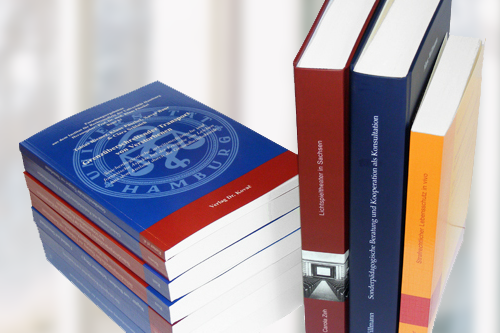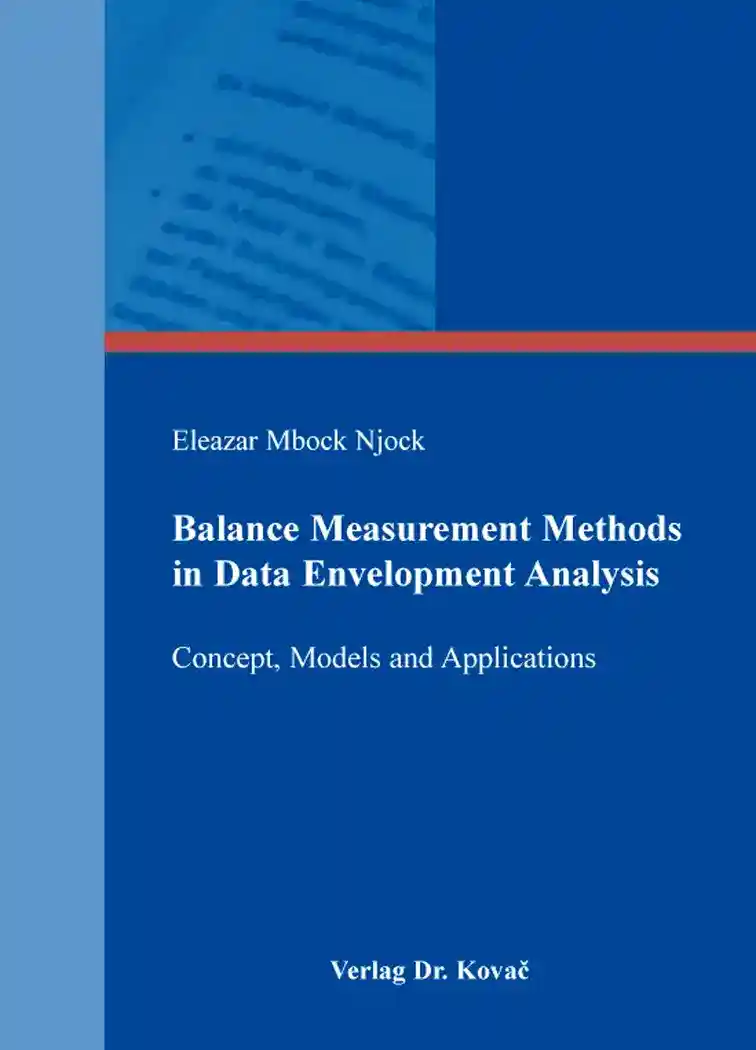Eleazar Mbock NjockBalance Measurement Methods in Data Envelopment Analysis
Concept, Models and Applications
QM – Quantitative Methoden in Forschung und Praxis, Band 36
Hamburg 2014, 178 Seiten
ISBN 978-3-8300-8063-3 (Print) |ISBN 978-3-339-08063-9 (eBook)
Zum Inhalt
Data Envelopment Analysis (DEA) is a benchmarking tool that evaluates the relative efficiency by comparing peer decision making units (DMUs) which transform varying quantities of the same set of inputs into varying amounts of the same set of outputs. The efficiency score is defined as the ratio of the weighted sum of outputs to the weighted sum of inputs. Input and output weights are not a priori specified but determined model endogenously. Consequently each DMU is free to choose the optimal set of weights that maximizes its efficiency score, showing itself in the most favorable light.
This total flexibility of weights may lead to disputable results. It could happen that the efficiency score will be given by the ratio of only one single input and one single output. It follows that the weights of the remaining inputs and outputs are reduced to zero, thus neglecting or ignoring inputs and outputs relative to which the evaluated DMU performs poorly. This weakens DEA assuming that inputs and outputs were chosen because of their relevance.
This is particularly inconvenient for business cases in which balance is primordial, whereby DMUs target to perform well relative to all indicators. With regard to balance two different approaches consisting of different methods can be distinguished in the DEA literature. The balance enforcement approach takes the balance into account by means of weights restrictions whereas the balance measurement approach introduces balance as an additional performance indicator complementary to the efficiency score.
This work extensively presents, analyzes and compares balance measuring methods applying them on real life applications. It results typical model‘s characteristics, properties and limitations from which managerial insights are deduced.
Indeed, balance measuring methods offer insights about the strategy followed by DMUs and accordingly enable the identification of appropriate benchmarks permitting performance improvement. They successfully differentiate between specialized and balanced DMUs and thus allowing the clustering of similar DMUs. This work shows that Balance is not only a theoretical concept but an instrument that yields useful insights in practice solving real life problems.
Schlagworte
Balance measurementBalance scoreBenchmarkingData Envelopment AnalysisEffectiveness measurementEfficiency measurementKey performance indicatorsMulti-criteria decision makingPerformance measurementProductivity measurementIhr Werk im Verlag Dr. Kovač

Möchten Sie Ihre wissenschaftliche Arbeit publizieren? Erfahren Sie mehr über unsere günstigen Konditionen und unseren Service für Autorinnen und Autoren.
